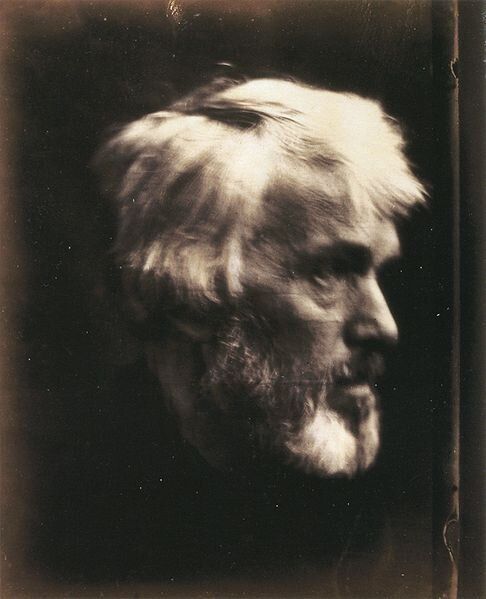The Scottish National Portrait Gallery has recently reopened after a dramatic overhaul lasting several years. Founded in 1889, the Gallery has one of the largest collections of portraits in the world, but is often overlooked. Sitting on Edinburgh's Queen Street, it was formerly a quiet and cosy affair; a poor neighbour to the resplendent classical facades of the Royal Academy and National Gallery. The Portrait Gallery's reopening this year reveals an expanded institution with 17 galleries and an utterly transformed interior. The once subdued muffled gloom has been lifted; Scotland can now boast a bright and airy Portrait Gallery in which to hang the nation's finest art.
The institution's soul, however, remains firmly intact. It continues to stand out amongst all those other national institutions for its clear sense of purpose and tone. The Gallery has a strong aura of Victorian self-improvement and national identity about it. The red Corsehill sandstone, strong gothic tone and looming statues on the exterior of the building continue to radiate a strong desire to stand out. Designed by the great architect Robert Rowand Anderson, the original planners seem to have made a conscious decision to disrupt the ordered Palladian rows of the Edinburgh New Town with a medieval statement. The entrance hall of the Gallery also remains a stunning display of artistic vision. A shimmering processional frieze of figures marches through from Scotland's past - from Stone Age man through William Wallace, Robert Burns and James Watt, and finishing with Thomas Carlyle at the head of the group.

Carlyle, the Victorian novelist and historian, was also ahead of thinkers in seeing the full potential of such an institution in the modern world. Born to a humble background in southwest Scotland, Carlyle was to define Victorian literature and thought, influencing a raft of thinkers from J.S. Mill to Charles Dickens. Indeed, his advice on art galleries and portraits continues to resonate today. Carlyle noted that portraits are often the best windows into the past: 'superior in real instruction to half-a-dozen written "Biographies"'. As a device he considered the best to be 'a small lighted candle by which the Biographies could for the first time be read, and some human interpretation be made of them...'
Carlyle's spiritual hold on the Gallery continues to resonate. Julia Margaret Cameron's early photograph from 1867, which sits in the Gallery's excellent Romantic Camera exhibition, captures some of the author's haunted restless intensity. While this is the only image of Carlyle currently on display, the gallery continues to be, in essence, a temple to the hero worship he strongly encouraged in 19th-century Britain. For him it was heroes, like Burns or Wallace that shaped and defined history. It was down to the artist, as spiritual leader, to alert the masses to the significance of these great individuals. Carlyle balked at prevailing utilitarian notions that societies could be mechanistically run, like a giant factories, and defined purely by the 'dismal science' of economics. And his message - that secularism and science are not enough for ordinary human souls - continues to resonate in our world obsessed by the Cult of Celebrity and the Heroes of Hollywood.

For this reason he considered portrait galleries to 'far transcend in worth all other kinds of National Collections of Pictures whatever' and they 'ought to exist (for many reasons, of all degrees of weight) in every country'. Surprisingly, such institutions were rare in his time - an 'extremely mournful' fact for Carlyle. Picture galleries, of course, were in 'abundance and superabundance' and 'whole acres of mythological smearing' were in existence. But portraits of genuinely 'great' figures, not plucked from classical mythology, were rare.
On the practicalities Carlyle was specific about a future Scottish Portrait Gallery. 'Ask always, what would the best-informed and most ingenious Scottish soul like most to see, for illuminating and verifying Scottish History to himself.' For Carlyle this was what mattered - rather than appealing to the masses directly - 'for it is certain, all other men will by and by follow this best-informed and most ingenuous one'. As with any publically funded institution, the refurbished Gallery does occasionally cross the line between accessibility and populism. It's difficult to imagine figures like Karen Gillan from Dr Who sitting alongside portraits of Walter Scott in the future, for example, however much we may be infatuated by her at the moment. Nevertheless even Carlyle, who advised against a 'vulgar Showman or Charlatan line of action' to attract the crowds, encouraged the democratic nature of the project. The Gallery's success 'must depend, a good deal at least, on popular support'. (Interestingly, he advised against showing paintings of the living and believed that time was necessary to 'discriminate between popular monstrosities and Historical realities in the matter of Men'.)
Carlyle remains a controversial figure. He was one of the few thinkers to reject economic progress as the measure of a society's health at the height of industrial change in Britain. His brand of hero worship - aimed at prompting ordinary people to live better lives - was equally problematic. He noted that it was difficult for these people to believe 'that the man, the mere man whom they see, nay, perhaps, painfully feel, toiling at their side through the poor jostlings of existence, can be made of finer clay than themselves.' With heroes, then, comes inequality; that there can be heroes - rather than simply famous people - continues to sit uneasily with us in a cultural context defined by equality. The Scottish National Portrait Gallery allows us to explore such deep questions - the nature of fame and celebrity; the nature of our individual and national identities. It is one of the best houses of art in Britain to contemplate them, and should be visited by anyone with an interest in art, history or identity.
The Portrait Gallery is open to the public and has free admittance and is open daily 10am-5pm. Thursdays until 7pm.
